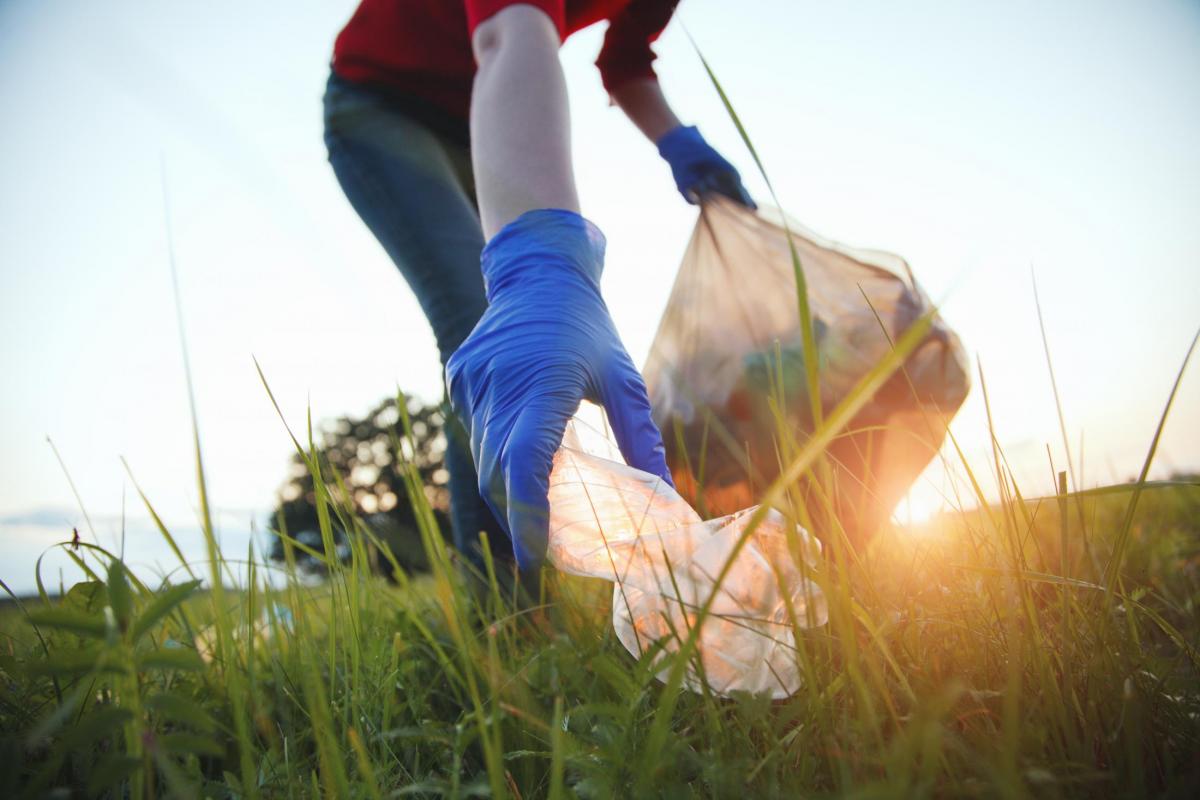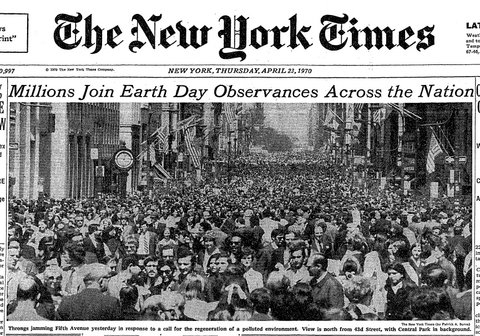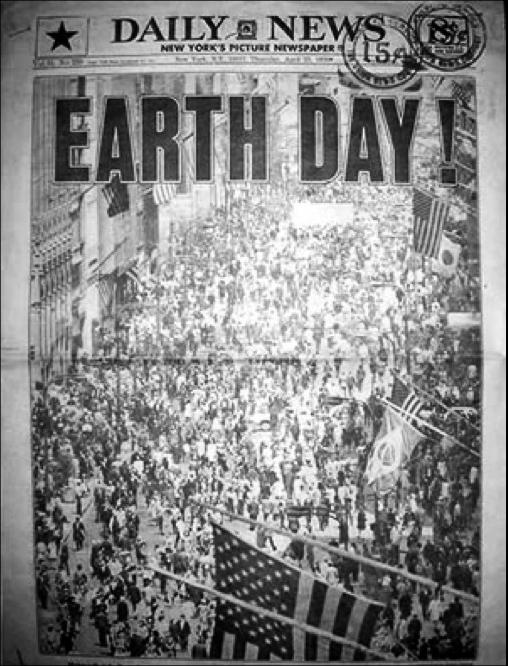
Witnessing a massive, 3-million gallon, oil tanker spill off the coast of Santa Barbara in 1969, then-Wisconsin Sen. Gaylord Nelson found inspiration.
In the book he later wrote, Beyond Earth Day, Nelson says he got the idea to launch the first “Earth Day” while on an environmental tour out west that summer when teach-ins against the Vietnam War were gaining popularity.
“Why not organize a huge, grassroots protest about what’s happening to our environment?” Nelson recalled thinking. “A national teach-in on the environment” for the national media and elected officials. “The environmental deterioration was all around us, and everyone seemed to notice except the political establishment,” Nelson wrote.
Other disturbing images along with the Santa Barbara spill, of urban smog, of oil, grease, and trash fires on Cleveland’s Cuyahoga River, of a dying Lake Erie, of the pesticides killing backyard birds, had also come to the country’s attention, and Rachel Carson’s 1962 book, Silent Spring, had somewhat set the stage for action. Ultimately, the first Earth Day on April 22, 1970, attracted some 20 million people—1 out of 10 of all Americans—to demonstrations, rallies, lectures and marches across the country. In a feat that would seem impossible in these more partisan times, Nelson had convinced Rep. Pete McCloskey, a conservation-minded Republican, to serve as co-chair.


Nelson later said that the April 22 date was chosen because it fell between midterm and final exams on college campuses—and also before the summer break for primary and high schools.
More than 1,500 colleges and universities, 10,000 grade schools and high schools, and 2,000 community groups joined in, organizing events. Two of Nelson’s friends from the labor movement, United Auto Workers president Walter Reuther and American Federation of Labor president George Meany, in a fairly bold moves at the time, kicked in with donations.
Eventually, the rallies lead to passage of the Clean Air, Clean Water and Endangered Species Acts.
In 1990, Earth Day went global, mobilizing 200 million people in 141 countries. Today, more than 1 billion people now participate in Earth Day activities each year, making it the largest civic observance in the world, according to the Earth Day Network, an environmental group founded by some of the original Earth Day organizers.
It’s almost too funny to believe, in hindsight, but the date of the event caught the attention of the John Birch Society, which alleged the event was a poor attempt to conceal what the rallies really were: a communist plot to celebrate the 100th anniversary of Lenin’s birthday.
But after the first celebration in 1970, The New York Times reported, “Conservatives were for it. Liberals were for it. Democrats, Republicans and independents were for it. So were the ins, the outs, the executive and legislative branches of government.”
Nelson, who passed away in 2005, said he believed the support of these groups would be critical to any successful demonstration on behalf of the environment. He recalled launching the whole show in 1970 with just $185,000
“It’s hard to know when you stand on the brink of incredible change,” Jamie Henn, co-founder of 350.org, recently wrote. “But as today’s climate crisis threatens to spin out of control, Earth Day should give us hope. When the right conditions arise, we can still come together to do extraordinary things.”
